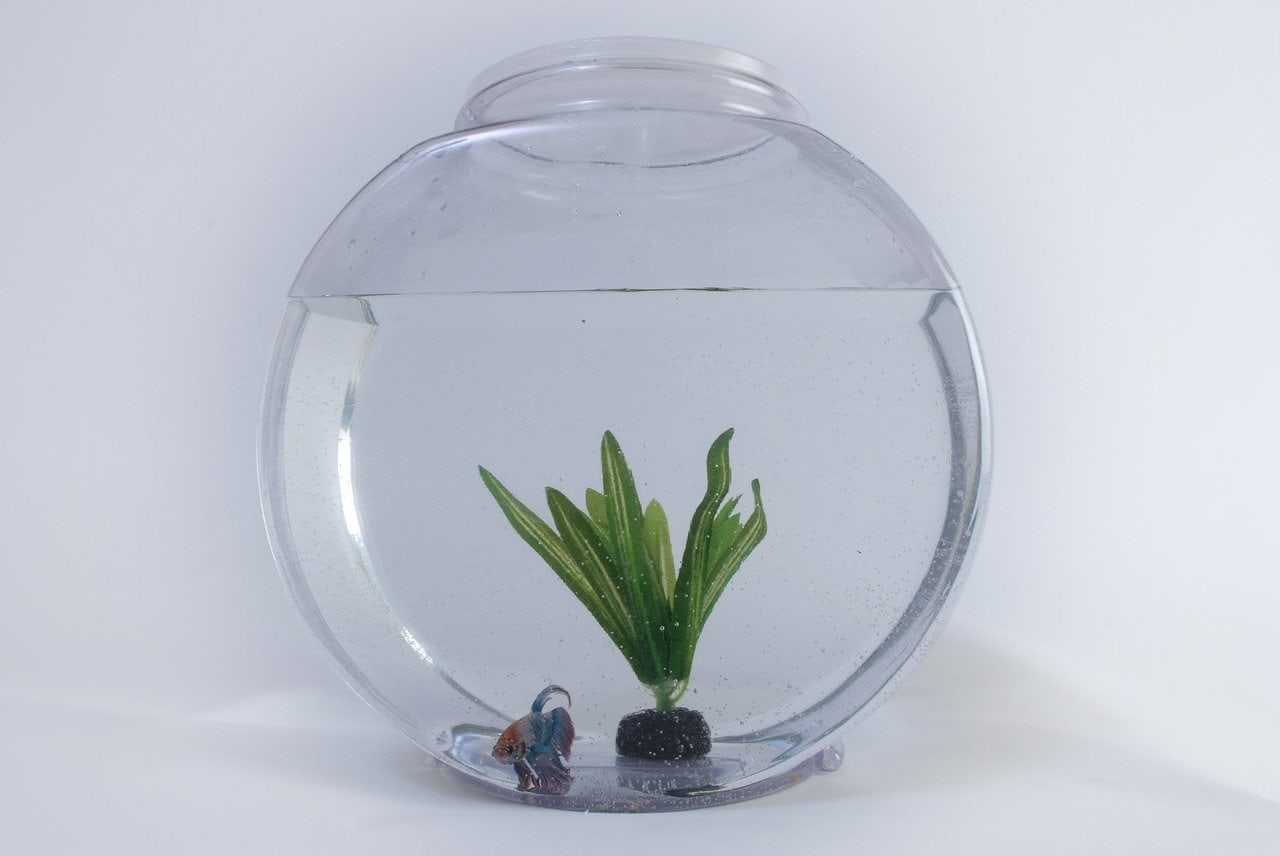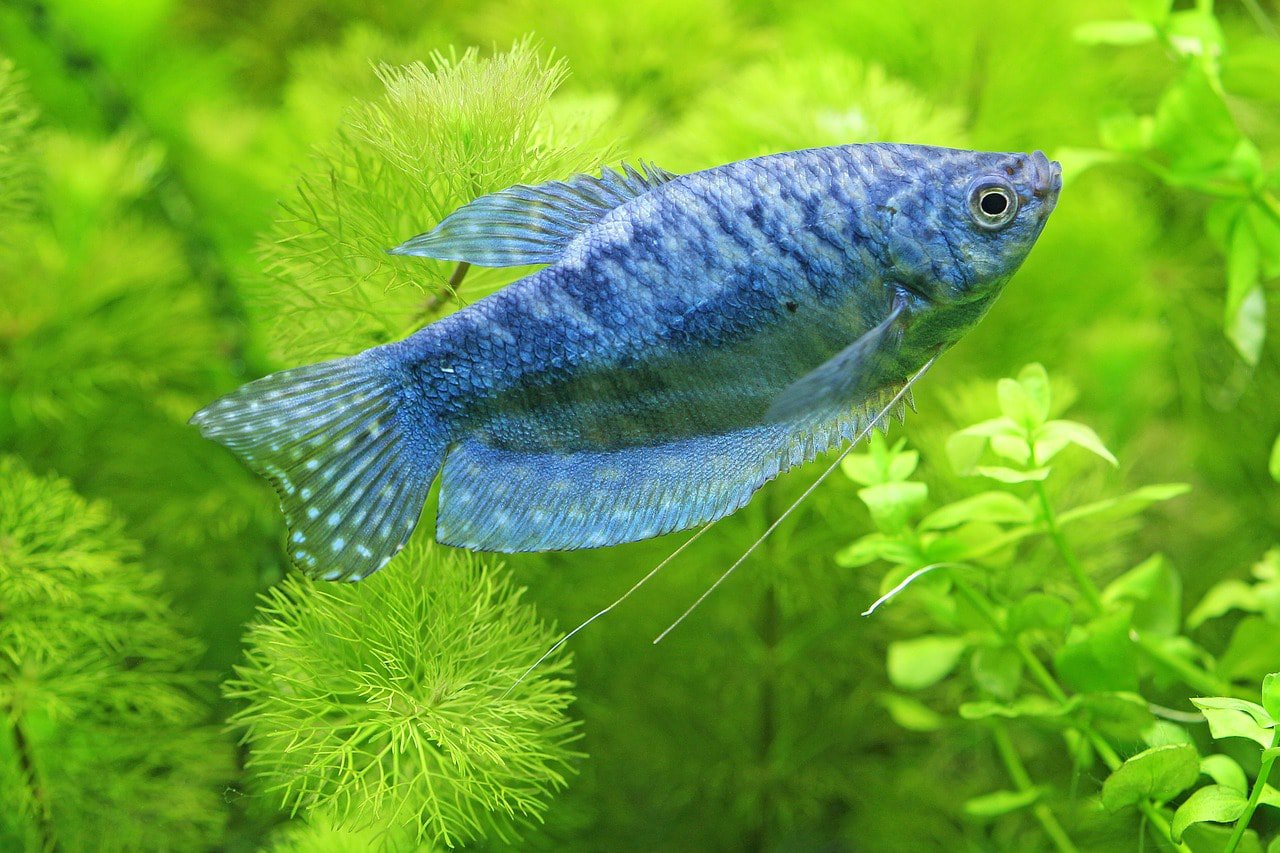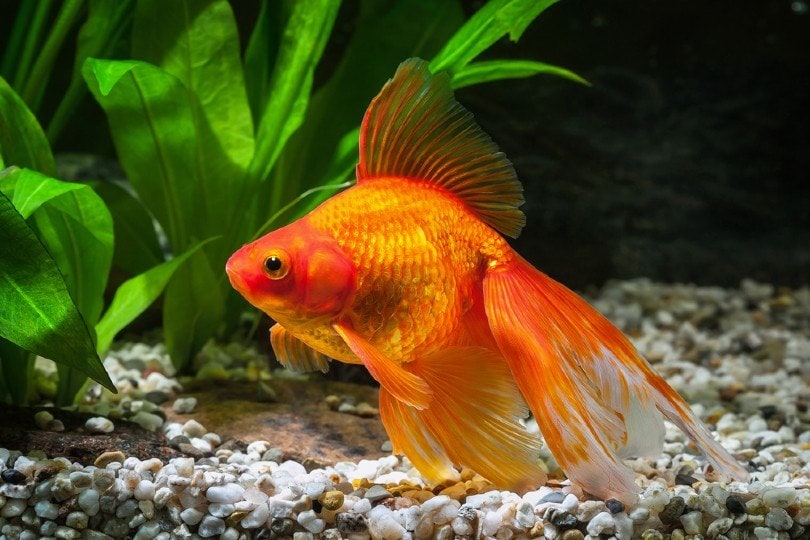Click to Skip Ahead
Camallanus is a parasitic roundworm in the family Camallanidae; Camallanus fotedari are parasites of aquarium fish most commonly found in freshwater tropical fish, but other types of fish can be infected. Camallanus worms are difficult to spot, and they often do not cause a fish to exhibit any noticeable signs or symptoms.
Camallanus worms usually kill their host quickly, but if you are lucky enough to spot these worms in your fish, this is a helpful guide to determine all the possible reasons and treatments you can use to combat the worms and save your fish.

Camallanus Worms Explained
Camallanus worms burrow into a fish’s digestive tract to feed on their blood. They are commonly referred to as “vampire worms” due to their feeding habits. The result of a camallanus worm infestation is a quick yet painful death if left untreated.
Larvae Stages
Mature female worms will lay their first stage of larvae in foods that crustaceans will commonly eat. Once the crustacean consumes the infected food, the larvae will spread to its gut where they will eventually molt and enter a dormancy period.
The next stage includes the fish eating the crustaceans, and the larvae become active once again. The process will start up again and the larvae will become active and spread to the gut of the fish where they molt again. This is the worm’s unnoticeable growing period which is why it is not easy to notice these worms in your fish right away.
Their invasive potential is quick and produces no external signs of distress in your fish. They will grow to their adult size once they are nestled inside of your fish and this is where they will begin to make an outward appearance.
Camallanus worms will protrude from the anus of your fish and hang there as a thin, white thread. This is usually only seen in severe cases, but it is not uncommon for the worms to protrude from your fish at any given time from the infestation.


The 5 Steps to Remove Callamanus Worms

Step 1: Remove the infected fish into a quarantine tank or tub with an air stone. If one fish is infected, it will almost always mean every fish is infected or at risk and needs to be treated (do not medicate a tank with shrimps or snails as many medications will kill them).
Step 2: Medicate the fish to paralyze the adult worms. The fish will expel them through the digestive tract. Refer to a professional for the best parasite medication for your fish. Treatment should last between one and two weeks.
Step 3: Clean the tank and filter thoroughly. Soak all decorations and replace live plants and substrate. You should also disinfect any nets. Buckets, and siphons the fish have been in contact with.
Step 4: Dry the tank in the warm sun and wipe it with a cloth that has been soaked in aquarium salt.
Step 5: Set up the tank a week before you plan to move the remaining fish back in. Let the filter run and kick-start the nitrogen cycle with a bacterial culture from your local fish store.
NOTE: Fenbendazole is praised as an effective treatment for Camallanus roundworm infestations in freshwater tropical fish.

How Fish Get Camallanus Worms
These worms can infiltrate your aquarium by a few sources that many aquarists use frequently:
- Infected fish waste: If a fish in your aquarium passes a worm with their normal waste, the worm can enter any fish that decides to take a nibble of the waste. Since many fish are naturally curious creatures and opportunistic feeders, they are not shy to test if a floating poop is a food.
- Live foods: Live foods that host the first stage of the larvae give the worms an easy entrance into your fish’s system. This can mainly come from crustacean foods that are fed to your fish.
- Infected fish: Infected fish can pass on the infestation to other fish in the same tank. This is most common with new fish that have recently been introduced into the tank. Short quarantine time can also let the new fish bypass the health check and be added into the tank carrying a few larvae inside of their gut.
- Live plants: Live plants can host the first stages of the larvae and if a fish or crustacean nibbles the plant they will ingest these larvae.
- Dead fish: If a fish has died from the worms and you do not notice in time, other fish who fancy a nibble of the deceased fish will ingest some of the worms.
- Cross-contamination: Reusing aquarium equipment like siphons or equipment in other tanks without being disinfected and washed will result in cross-contamination and will leave you dealing with a severe outbreak of Camallanus worms.

Signs of a Camallanus Worm Outbreak
Most of the signs can mimic other illnesses that can cause you to misdiagnose the infected fish. Aside from the protrusion of the worms in the late stages, some other signs can help you diagnose the fish quickly.
- Abnormal swimming patterns: The fish may swim awkwardly from side to side or even appear to shake.
- Loss of appetite: The fish will start to develop a disinterest in food and eat less or nothing at all. They may also chew and spit the food out.
- Wasting: The stomach of the infected fish will appear sunken and concaved. This will make the fish’s head and eyes protrude more due to disproportion with the body.
- Protrusion: The worms may appear white or red depending on whether they have recently fed on blood from the infected fish. They will hang limply from the anus of the fish.
- Clamped fins: The fish’s fins will be clamped, and the fish will appear as if it is swimming in a straitjacket.
- Lethargy: Advanced stages of the infestation will result in the fish bottom sitting and appear as if it is
- Weakness: The fish will struggle to swim and keep up with the other fish. It may also have to take frequent rests on the substrate to conserve its energy.

Aftermath Maintenance
Once the infestation has been killed off and your remaining fish are treated, you should investigate ways to prevent this from occurring again in the future. Make sure that you conduct regular health checks on your current.
Quarantine all new fish, invertebrates, and live plants for several weeks to ensure none of them are incubating a disease or parasite.

Final Thoughts
Practicing hygienic maintenance strategies with your tank and fish will ensure that you will not have to deal with the hassle and heartache of a severe parasite infestation. Make sure that you treat and isolate every infected fish and quarantine new specimens for at least 4 weeks at minimum.
Early treatment with the right medication is the most effective method in this case and will enable you to help your fish overcome the deadly infestation.
Featured Image Credit by: Pixabay










